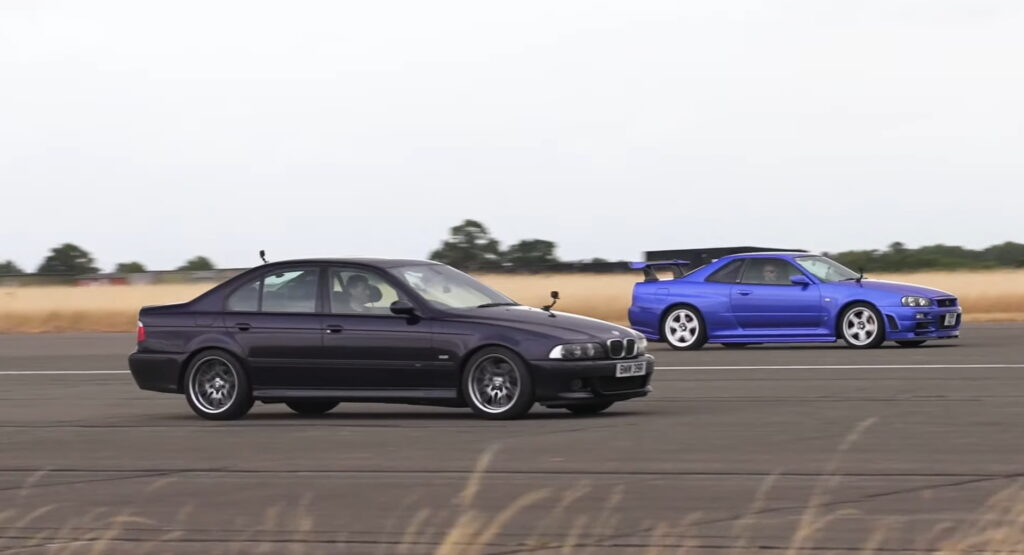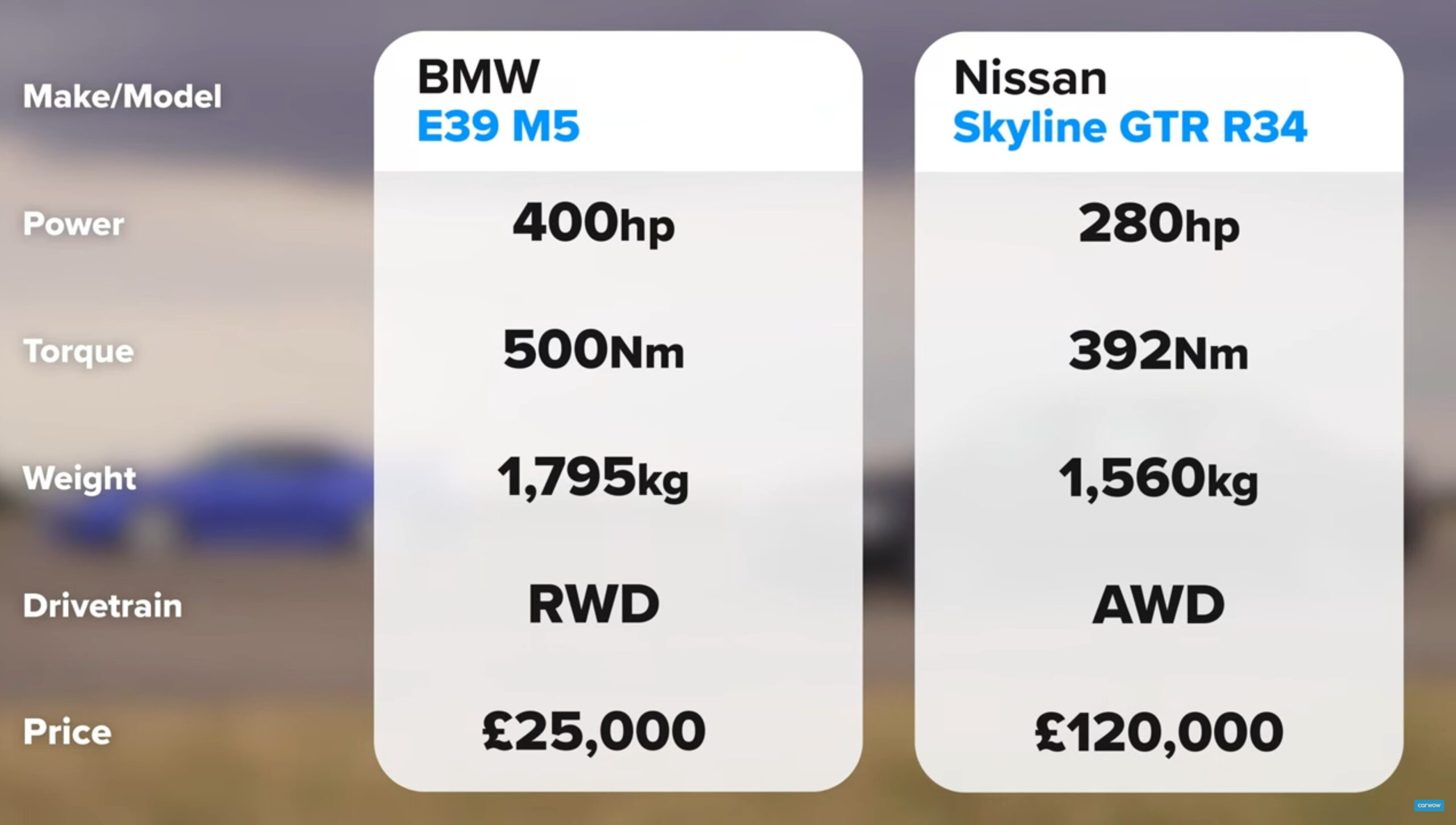The performance car segment was pretty good in 1998 as both the E39 BMW M5 and the Nissan Skyline GT-R R34 were just making their way onto the roads of the world. And although values for the Japanese car have risen higher than the German sedan, which should you pick if you’re challenged to a drag race?
On paper, there’s an obvious choice. While the Nissan‘s turbocharged straight-six produces a creditable 280 hp (209 kW/284 PS) and 289 lb-ft (392 Nm) of torque, the BMW’s naturally aspirated V8 is significantly more powerful, producing 400 hp (298 kW/406 PS) and 369 lb-ft (500 Nm) of torque.
The Skyline GT-R R34, however, does draw back some points because its engine powers all four wheels, while the M5‘s V8 sends all of its power to the rear wheels. And despite the extra driveline equipment, the Nissan also weighs 518 lbs (235 kg) less than the BMW.
Read Also: Is Anyone Going To Pay Over $450,000 For This 231-Mile Nissan Skyline R34 GT-R?
That lowered weight and those extra driven wheels apparently have a significant impact, making the standing quarter-mile drag race much closer than expected. I won’t spoil the results of those races, but suffice it to say, the best two-out-of-three competition goes down to the last drag.
I will, however, spoil the results of the rolling race, because they show that how performance is deployed can be just as important as how much of it there is.
To wit, in the first two rolling races (the first starting in second gear at 30 mph [48 km/h] and the second starting in third gear at 50 mph [80 km/h]) the BMW walks all over the Nissan. The driver of the second car, though, is adamant that the first car’s advantage is almost entirely in how it takes off.
Blaming turbo lag, he asks to start the third race in third gear at 60 mph (96 km/h) to help ensure that the Skyline is in the boost when they take off. And, indeed, when the turbo is spooled up, the performance between the two cars is almost identical with a neck-and-neck victory going to the BMW.





